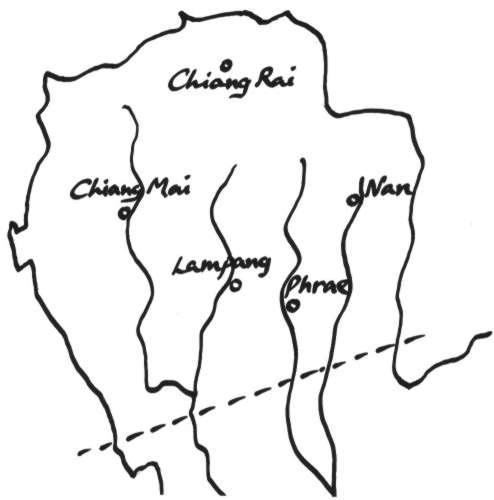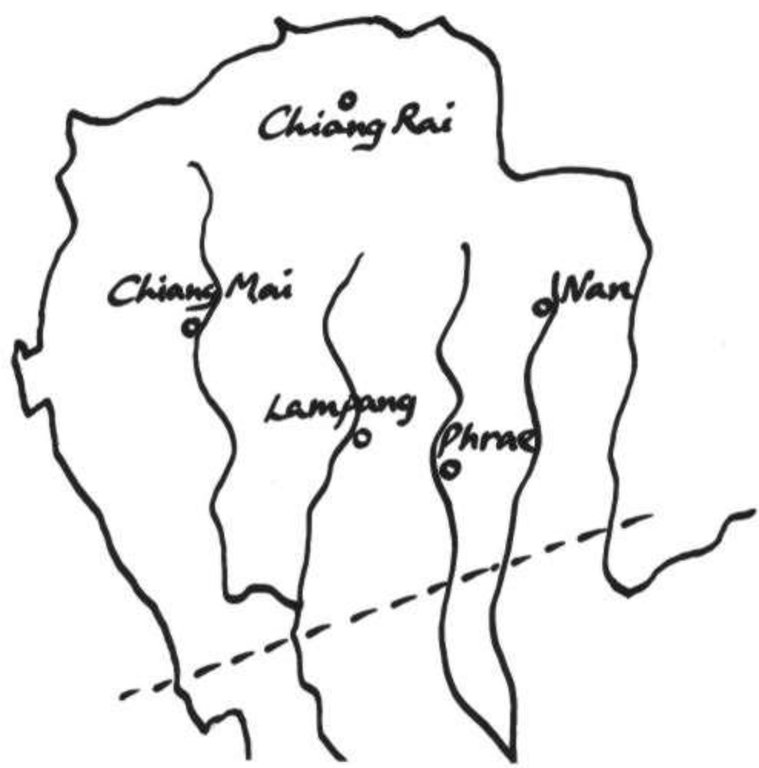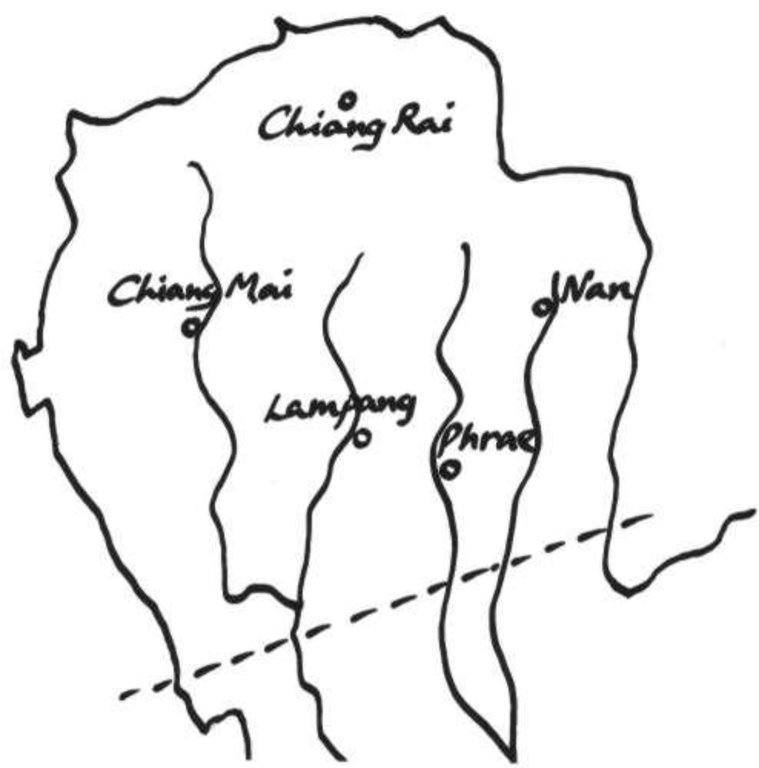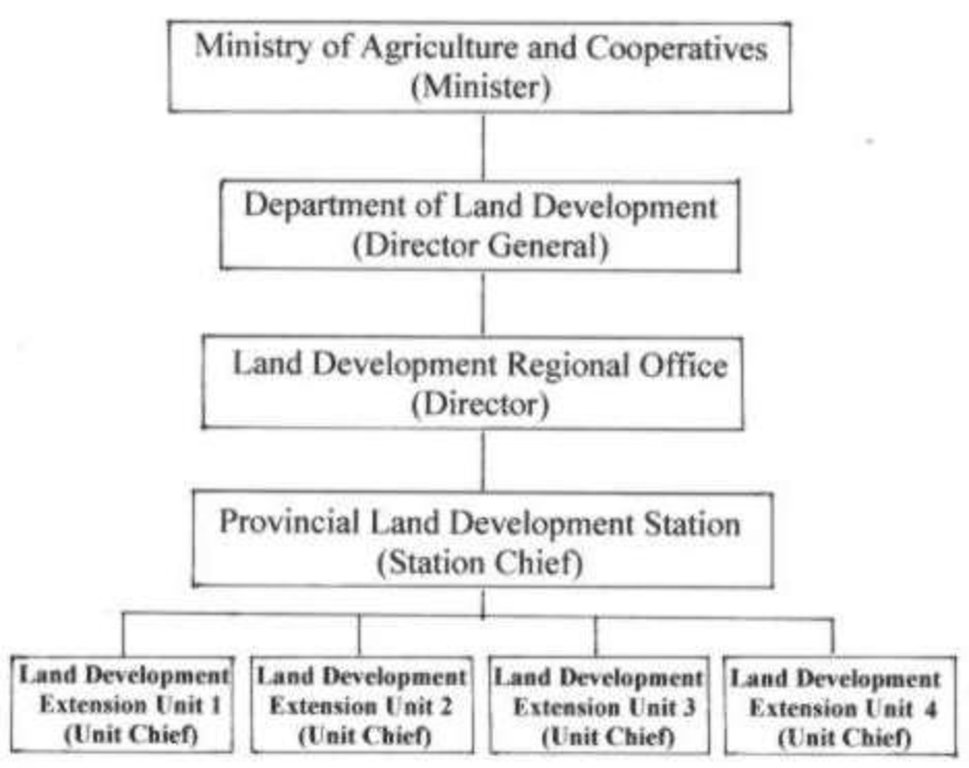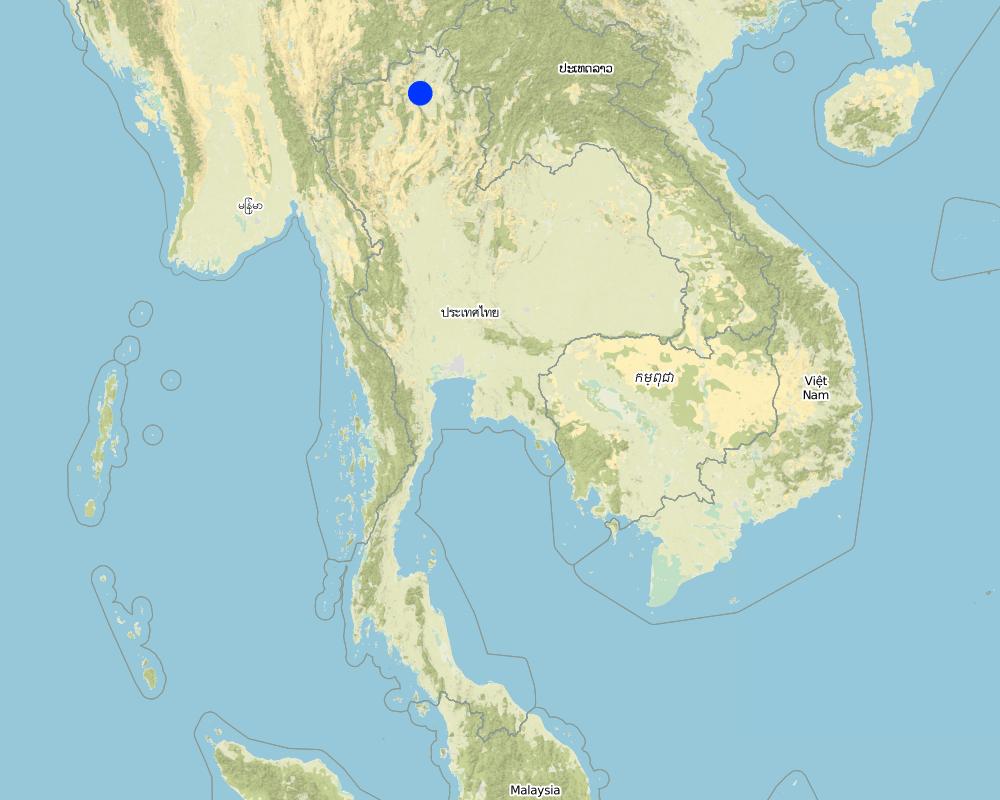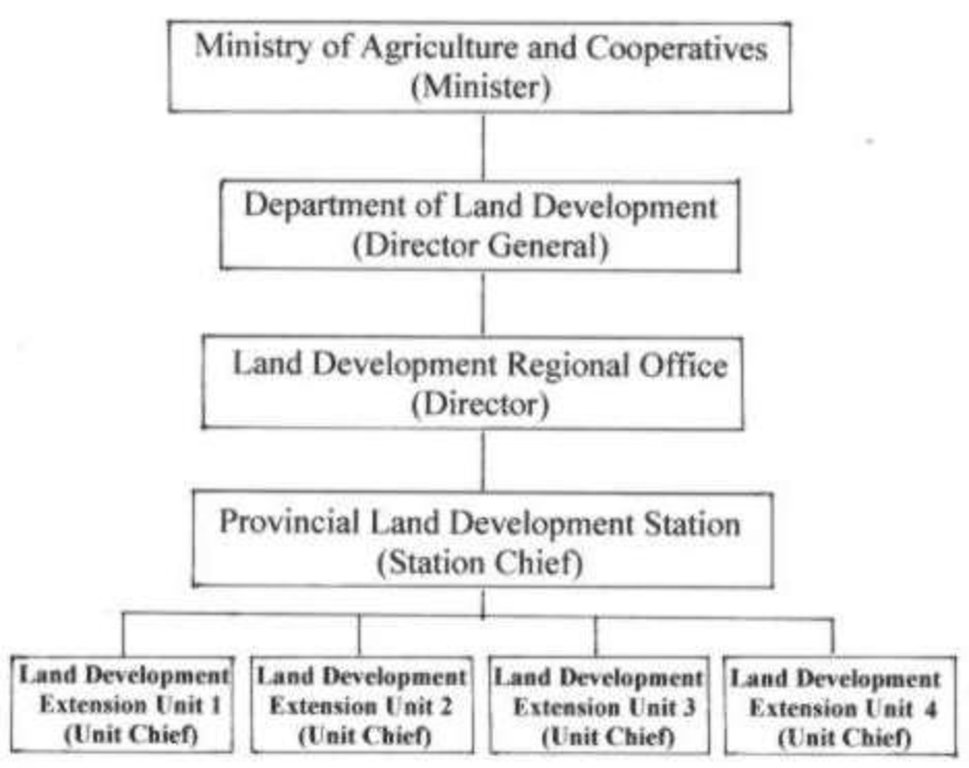Vegetative erosion control and conservation cropping system [泰国]
- 创建:
- 更新:
- 编制者: Samran Sombatpanit
- 编辑者: –
- 审查者: Fabian Ottiger
approaches_2417 - 泰国
查看章节
全部展开 全部收起1. 一般信息
1.2 参与方法评估和文件编制的资源人员和机构的联系方式
SLM专业人员:
Boonchee Sawatdee
66-1-9513859, 66-53-890109
boonchee@thai2k.com
LDD Regional Office 6
Amphur Maerim, Chiang Mai 50180
泰国
SLM专业人员:
有助于对方法进行记录/评估的机构名称(如相关)
World Association of Soil and Water Conservation (WASWC) - 中国有助于对方法进行记录/评估的机构名称(如相关)
Swiss Agency for Development and Cooperation (DEZA / COSUDE / DDC / SDC) - 瑞士1.3 关于使用通过WOCAT记录的数据的条件
编制者和关键资源人员接受有关使用通过WOCAT记录数据的条件。:
是
1.4 SLM技术问卷的参考
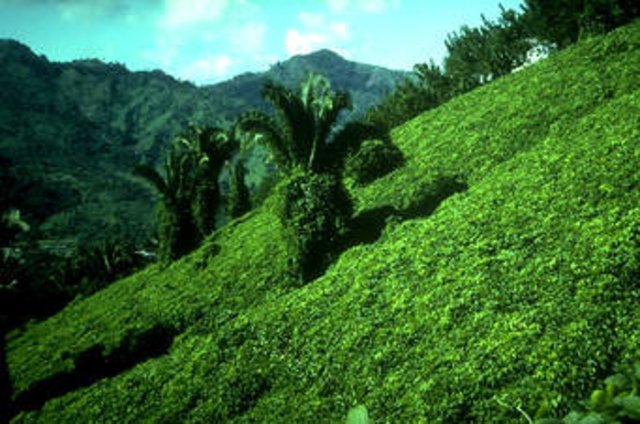
Growing cover crops for weed control [乌干达]
Cultivating leguminous crops in weed prone fields to help overgrow and kill the weeds
- 编制者: Sunday Balla Amale
2. SLM方法的描述
2.1 该方法的简要说明
This approach is 'the way' or 'how' the 'vegetative erosion control and conservation cropping system' has been implemented in the Upper North region of Thailand.
2.2 该方法的详细说明
该方法的详细说明:
Aims / objectives: The purpose of this approach is to have sloping land used in a sustainable way, by planting hedgerows along the contour line, allowing enough space for growing cash- and other crops. In the process, government officers will work with sloping land farmers, promoting them to do the system by giving assistance in the form of necessary farm inputs and wage for doing the work. The work starts with site selection, land preparation, alignment of contour lines, establishing hedgerows, growing crops -- cash crops and tree crops, etc. At the same time extension workers will provide farmers with training in various aspects of SWC, and visits to demonstration fields and farms.
2.3 该方法的照片
2.5 采用该方法的国家/地区/地点
国家:
泰国
区域/州/省:
Upper North
Map
×2.7 方法的类型
- 基于项目/方案
2.8 该方法的主要目的/目标
The Approach focused mainly on SLM with other activities (Cropping system that will enable farmers to earn reasonable income for their living.)
1. To reduce soil erosion. 2. To improve soil fertility. 3. To increase crop yied and income.
The SLM Approach addressed the following problems: Accelerated soil erosion and land degradation, low soil productivity, poor water conservation, low income, damaged environment.
2.9 推动或妨碍实施本办法所适用的技术的条件
社会/文化/宗教规范和价值观
- 阻碍
Low literacy rate
Treatment through the SLM Approach: Improve education.
机构设置
- 阻碍
The number of extension workers is few.
Treatment through the SLM Approach: Employ more of them.
法律框架(土地使用权、土地和水使用权)
- 阻碍
Farmers without land title are reluctant to implement SWC.
Treatment through the SLM Approach: Promote land reform programme.
This type of approach/technology does not need too much of involvement in the land use right or ownership, particularly when there is no major disturbance of soil surface for constructing structural measures.
了解SLM,获得技术支持
- 阻碍
Technologies take long time to show benefit.
Treatment through the SLM Approach: 1. Find technologies which give short-term benefit. 2. Create awareness to farmers.
3. 相关利益相关者的参与和角色
3.1 该方法涉及的利益相关者及其职责
- 当地土地使用者/当地社区
Specific ethnic groups: H'mong, Akha, Kare, etc. Also poor peasant farmers
- 国家政府(规划者、决策者)
Land Development Department
- 国际组织
如果涉及多个利益相关者,请注明领导机构:
Alley cropping was designed by IITA and grass strip by Australian specialists. They were introduced into Thailand around 1985 and subsequently adapted by national specialists for applying in the Northern Agricultural Land Development Project, supported by the World Bank.
3.2 当地土地使用者/当地社区参与该方法的不同阶段
| 当地土地使用者/当地社区的参与 | 指定参与人员并描述活动 | |
|---|---|---|
| 启动/动机 | 无 | |
| 计划 | 被动 | public meetings |
| 实施 | 被动 | responsibility for minor steps |
| 监测/评估 | 被动 | public meetings; |
| Research | 无 |
3.3 流程图(如可用)
3.4 有关SLM技术选择的决策
具体说明谁有权决定选择要实施的技术:
- 主要是SLM专家,咨询土地使用者之后
解释:
consultative.
Decisions on the method of implementing the SLM Technology were made by mainly by SLM specialists with consultation of land users. consultative. With financial assistance provided
4. 技术支持、能力建设和知识管理
4.1 能力建设/培训
是否为土地使用者/其他利益相关者提供培训?:
是
明确受训人员:
- 土地使用者
- extensionists/trainers, school children/students,
培训形式:
- 在职
- 农民对农民
- 示范区域
- 公开会议
- 课程
涵盖的主题:
Short training (1-2 days) in cropping system and land use management at a nearby locality where technicians explain how the approach is useful for farmers and how to do.
4.2 咨询服务
土地使用者有权使用咨询服务吗?:
是
指明是否提供了咨询服务:
- 在土地使用者的土地上
说明/注释:
Name of method used for advisory service: TAF; Key elements: Training, Action, Follow-up.; 1) Advisory service was carried out through: Government's existing extension system. Extension staff: Mainly government employees 3) Target groups for extension: land users; Activities: To know how to cope with soil degradation problem
Advisory service is inadequate to ensure the continuation of land conservation activities; There are too few SWC extensionists to work with farmers efficiently, making the activity not so well handled and maintained.
4.3 机构强化(组织发展)
是否通过这种方法建立或加强了机构?:
- 是,适度
具体说明机构的强化或建立程度:
- 本地
具体说明支持类型:
- 能力建设/培训
4.4 监测和评估
监测和评估是该方法的一部分吗?:
是
注释:
technical aspects were ad hoc monitored through observations; indicators
There were few changes in the Approach as a result of monitoring and evaluation: 1. Change in cropping system to fit the farmers' need and market. 2. Some farmers have expanded more area for SWC approach.
4.5 研究
研究是该方法的一部分吗?
是
明确话题:
- 社会学
- 经济/市场营销
- 技术
提供进一步的细节,并指出是谁做的研究:
Research mainly concerns technology development and efficiency in decelerating soil ersoion and improving soil fertility.
Research was carried out both on station and on-farm
5. 融资和外部物质支持
5.1 该方法中SLM组成部分的年度预算
如果不知道准确的年度预算,请给出一个范围:
- 100,000-1,000,000
注释(例如主要的资助来源/主要捐助者):
Approach costs were met by the following donors: government (national - Dept. of Land Development.): 100.0%
5.2 为土地使用者提供财政/物质支援
土地使用者是否获得实施该技术的财政/物质支持?:
是
5.3 对特定投入的补贴(包括劳动力)
- 农业
| 具体说明哪些投入得到了补贴 | 程度如何 | 对补贴做出具体说明 |
|---|---|---|
| 种子 | 充分融资 | Only during establishment |
| 化肥 | 充分融资 | Only during establishment |
| Biocides | 充分融资 | Only during establishment |
- 基建
| 具体说明哪些投入得到了补贴 | 程度如何 | 对补贴做出具体说明 |
|---|---|---|
| community infrastructure | 充分融资 | Only during establishment |
如果土地使用者的劳动力是一项重要的投入,那么是不是:
- 获得其他物质支持
注释:
Planting materials, training, advise
5.4 信用
是否根据SLM活动的方法给予信用值?:
否
6. 影响分析和结论性陈述
6.1 方法的影响
该方法是否帮助土地使用者实施和维护SLM技术?:
- 否
- 是,很少
- 是,中等
- 是,支持力度很大
They are more aware of what they should do to improve soil and water management such as mulching, green manuring fertilizer application and addition of organic matter.
Did other land users / projects adopt the Approach?
- 否
- 是,很少
- 是,中等
- 是,支持力度很大
Such as Thai-Australian Highland Development Project
6.3 方法活动的可持续性
土地使用者能否维持通过该方法实施的措施(无外部支持的情况下)?:
- 是
6.4 该方法的长处/优点
| 土地使用者眼中的长处/优势/机会 |
|---|
| 1. Improve soil fertility and productivity |
| 2. Increase income |
| 3. Attain sustainable land use. |
| 编制者或其他关键资源人员认为的长处/优势/机会 |
|---|
| 1. The approach can reduce soil loss/runoff (How to sustain/ enhance this strength: Try to integrate annual cash crops and fruit trees) |
| 2. Improve soil fertility |
| 3. Conserve soil moisture |
| 4. Increase yield/income |
| 5. Preserve the environment |
| 6. Easily implemented by farmers |
| 7. It requires low cost. |
6.5 该方法的弱点/缺点以及克服它们的方法
| 土地使用者认为的弱点/缺点/风险 | 如何克服它们? |
|---|---|
| 1. Require more labour to create and maintain | 1. Grow fast-growing tree specie, |
| 2. Certain part of the land cannot be used to grow crops. | 2. Hire more labourers from the increased income. |
| 编制者或其他关键资源人员认为的弱点/缺点/风险 | 如何克服它们? |
|---|---|
| 1. More labour intensive than normal farming practice | Good labour management |
7. 参考和链接
7.1 方法/信息来源
- 实地考察、实地调查
- 与土地使用者的访谈
7.2 参考可用出版物
标题、作者、年份、ISBN:
Sajjapongse, A.., C.Anecksamphant and S. Boonchee. 2000. ASIALAND Management of Sloping Land Network. Special Lecture, LDD Technical Meeting, February 15-18, 2000, Chjiang Mai, ThailandOther documents of IBSRAM
可以从哪里获得?成本如何?
Department of Land Development, Bangkok 10900, ThailandIBSRAM. P.O. Box 9-109, Bangkok 10900, Thailand
标题、作者、年份、ISBN:
Other documents of IBSRAM
可以从哪里获得?成本如何?
IBSRAM. P.O. Box 9-109, Bangkok 10900, Thailand
链接和模块
全部展开 全部收起链接

Growing cover crops for weed control [乌干达]
Cultivating leguminous crops in weed prone fields to help overgrow and kill the weeds
- 编制者: Sunday Balla Amale
模块
无模块


